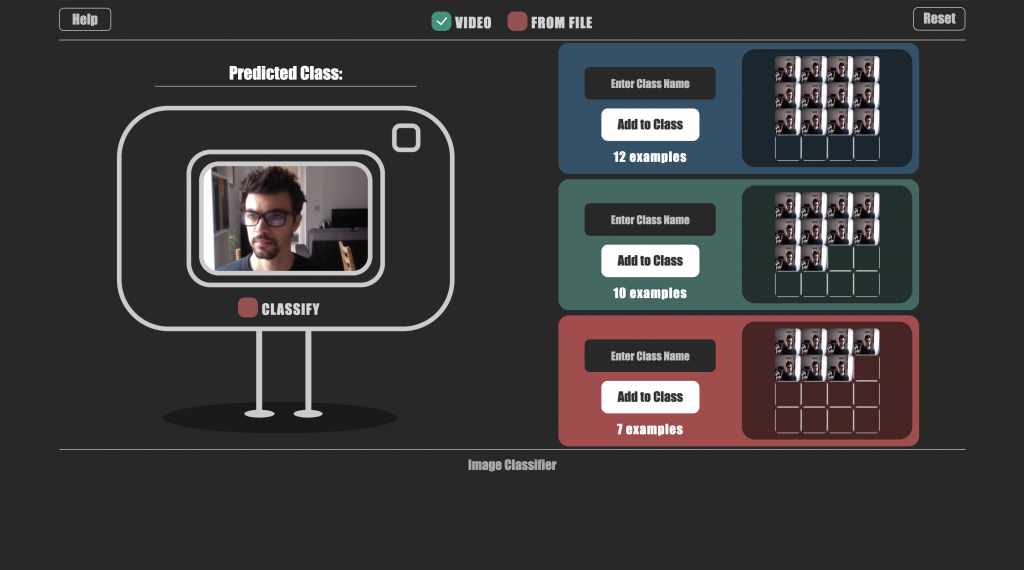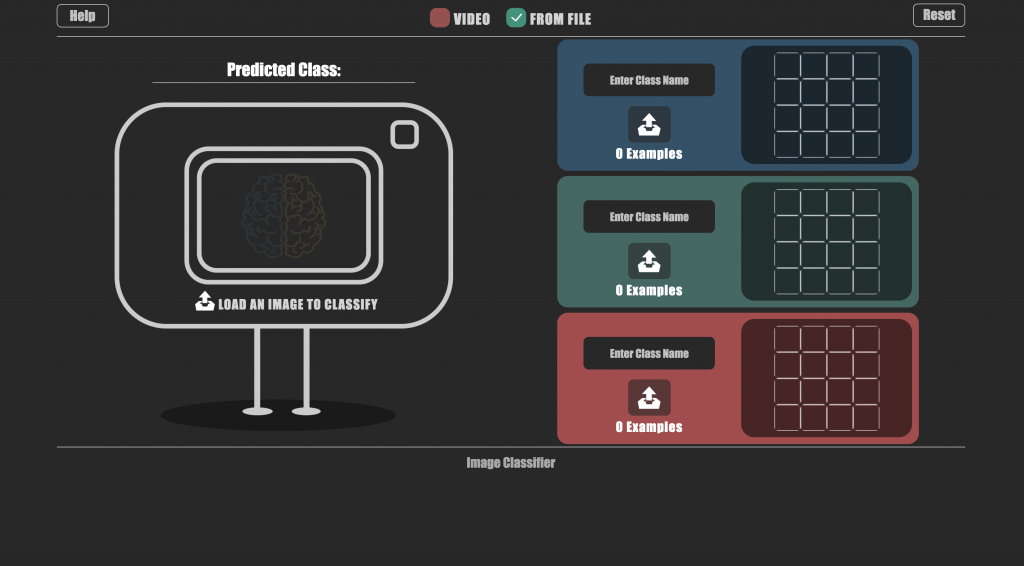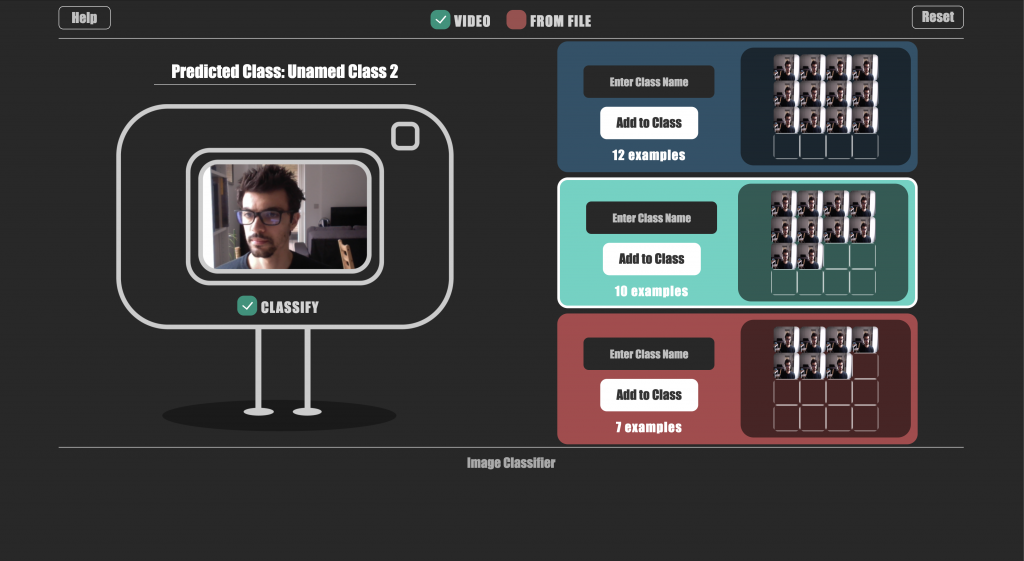
I am a research associate and learning technologist at Goldsmiths, University of London and working in partnership with University of London and Coursera to develop game-based learning activities. These tools are aimed at students and learners with the attempt of offering interactive and playful ways to study and understand a variety of Computer Science topics.
© 2020 Goldsmiths, University of London
All rights reserved. No part of this publication may be reproduced, distributed, or transmitted in any form or by any means without the prior written permission of the publisher, except in the case of brief quotations embodied in critical reviews and certain other noncommercial uses permitted by copyright law.
Game Type
The “Image Classifier” interactive learning environment is a graphical interpretation of one of the many uses of machine learning; Image Recognition.
This is a learning based system but should be integrated with additional resources previous to exploring it. Furthermore, it can be used as an exercise environment for the basic concepts of machine learning.
Description
Machine learning is a subset of artificial intelligence and can be defined as the study of computer algorithms that improve automatically through experience. Machine learning algorithms build a mathematical model based on sample data, known as “training data”, in order to make predictions or decisions without being explicitly programmed to do so.
Nowadays, there are a variety of fields and applications where machine learning is applied to solve complex computations. This interactive learning environment explores machine learning as a tool for image recognition. It is a system designed to practically show how computers recognise a set of still images and organise them into predicted groups or classes. Users can add image files to up to three arbitrarily named classes. The images can be added to each class either via files upload or directly from the device camera. Users can then see the machine algorithm in action which highlights the predicted class for a given image in real time.
Terminal Learning Objectives
This interactive learning environment has the following TLO:
- Create an abstract mental model of the machine learning basics
- Provide a concrete example of machine learning usage
- Understand the basic model of machine learning
Game Design Values
- Experience: The “Image Classifier” interactive learning environment is a graphical interpretation of image recognition which allow users to understand the basic model of machine learning.
- Theme: Graphical interpretation which uses minimalistic design to show one of the purposes of machine learning.
- Point of View: The “Image Classifier” is presented as a 2D environment containing images, dynamic content, and UI buttons. The system has minimalistic assets which resemble a digital camera to enhance the image recognition thematic.
- Challenge: There are no challenges in this environment other than exploring the system. Guided exercises can be integrated with the system to have users train multiple classes and upload different set
of data. - Decision-making: There are no real time decisions to be made. Users can navigate the system at their pace. Users can arbitrarily change the name of up to three classes, upload images or use the device camera to assign data to each class, visualise the algorithm prediction and eventually reset the system for new runs.
- Skill, strategy, chance, and uncertainty: There are no skills or particular strategies required in this simulation. There is always an element of uncertainty in the image classification process and it is determined by the algorithm efficiency and quality quantity of the data.
- Context: The simulation is run as a web application. It has been used as part of interactive formative learning material on E-learning platforms like Coursera. Furthermore, it has been used as introductory material for kids.
- Emotions: The “Image Classifier” is meant to generate a feeling of discovery, excitement and, why not, fun in exploring machine learning.



